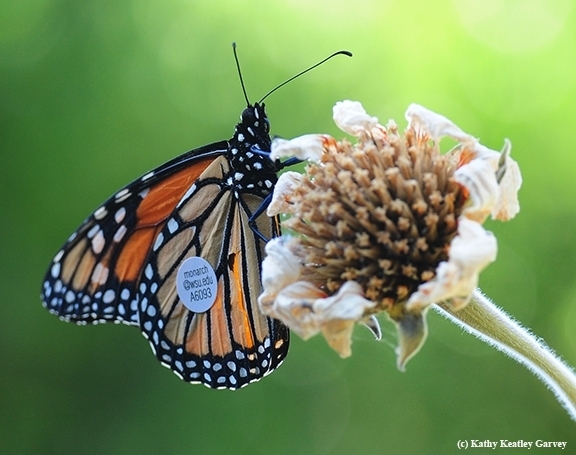
They are a beautiful sight.
Hopefully, tagged migratory monarchs from the research project of entomologist David James of Washington State University, will pass through--as they do every year from the Pacific Northwest--on their way to their coastal California overwintering sites. They are tagged on a discal cell.
Meanwhile, scientists in the Northeast are tagging monarchs (heading for Mexico) in a different way. They're attaching "small, lightweight tracking devices to nearly 50 strong and healthy butterflies," according to the New Hampshire Public Radio, in a piece published Sept. 12. "Towers can then ping their location when the small creatures are nearby."
The article related that "Scientists across the country are studying their migration patterns through a project funded by the federal government. This is the second full year that the New Hampshire Audubon Center is participating in a monarch tracking program."
The article by Olivia Richardson quotes Diane De Luca who works at the center: “The thought behind tagging monarchs here in the Northeast is to get a better sense of what they actually do when they're first starting their migration."
The tracking devices are lightweight, but the scientists seek out "strong, younger butterflies" without tattered wings. (See more on the website)
One tracked butterfly flew 60 miles in one day.
"De Luca said last year a butterfly they tagged traveled to Massachusetts and stopped at Lynnfield Marsh, one of the state's largest freshwater marshes," Richardson wrote. "De Luca said purple loosestrife, a type of flower considered an invasive species, is abundant at the marsh and it's attractive to monarch butterflies, who feed off of it."
Aren't monarchs fascinating?
Ping! There goes another butterfly!
Attached Images:
